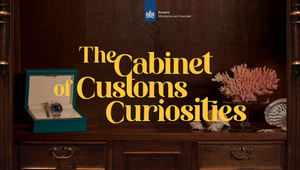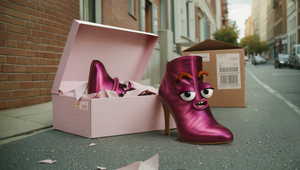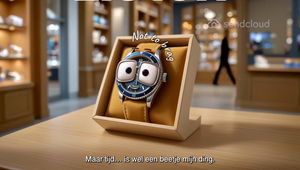
AI-Generated Art and ‘The Death of Artistry'

In late August 2022, a person named Jason Allen won first place at Colorado State Fair’s fine art competition. His win caused an uproar, with users on Twitter calling it 'pretty fucking shitty' and lamenting that 'We’re watching the death of artistry unfold before our eyes'. Their ire wasn’t aimed at Allen’s artwork, but rather at his method of creating it.
Allen’s piece - 'Théâtre D'opéra Spatial' - was created entirely using AI software called Midjourney. Allen provided the software with the prompts it used to create the artwork, before printing the results on canvas. He entered the piece into the digital art category, and labelled it 'Jason Allen via Midjourney'.
It was arguably a fair and transparent submission into an appropriate category, but it has raised serious questions about AI-generated art—including many we might not be ready to answer yet.
Though concerns about AI replacing humans working in skilled and creative roles, including artists, are justifiable, there could be real and powerful benefits in harnessing AI to finish mundane tasks so that humans can focus on more interesting work.
Sophisticated software like Stable Diffusion, Dall-E (2) and Midjourney are capable of producing work that more accurately represents the original natural language prompt. Some of the publicly available examples on the Dall-E website are so spot-on that you’d easily mistake them for photographs or traditionally created artwork.
The quality of AI-generated art can at times be inconsistent, which means it might not be set to replace all other forms of art just yet. However, that consistency is improving by the day, and its potential applications in digital film production are dizzying.
On a practical level, AI could be used as a means to augment creativity, a sales tool to get creative teams from script to shoot faster, or a way to get buy-in from clients sooner. Simply put, film production teams could rely on AI-generated art to shorten their timelines significantly.
If these teams could use AI to churn out multiple variations on a single concept, they could 'fail faster' and discard the ideas that don’t seem to work in order to spend more time on the ones that do show promise.
If storyboard artists could use AI to generate background scenery and landscapes, it would give them more time to focus on elements requiring deeper thought and finer details, like characters. Time-saving techniques are already widespread in film, with studios often reusing background and character shapes to keep costs and timelines in check. This is true even for studios with massive resources, like Disney. AI-generated art could easily be used to achieve similar results, without needing to recycle previous work.
This is merely a prelude to the incredibly exciting possibility that AI might one day create truly original art. If AI is able to generate pieces that are separate and distinctive from anything that a human artist has created, then isn’t this art displaying an original viewpoint? Based on existing influences, yes, but unique in composition - just like the work of any other artist whose experiences inform their output.
AI-generated art should be seen as the dawn, rather than the end, of an era - one where machines handle mundane tasks, like spitting out endless variations of artwork based on simple prompts, which allows humans to tackle more complex and interesting challenges that require original creative thinking.
Pessimism is easy. Lord knows we’ve all been warned about the dangers of AI for years; by Hollywood, by sci-fi authors, and by people claiming to have an insider’s perspective on AI and machine learning. Be that as it may, the strongest predictor of future behaviour is past behaviour. On the whole, human beings have been able to embrace new forms of technology without entirely ridding ourselves of older technologies or more traditional ways of living.
After all, no one complains about photography being increasingly driven by AI, whether it concerns automatic settings for shooting or for editing. Thanks to AI, we’ve been able to eliminate all the traditional steps of photography, enabling the average person to quickly and easily snap a professional-looking picture - and this doesn’t prevent photography enthusiasts from going the old-school, traditional route when it suits their needs.
In short, rather than leaning into overblown fears about emerging technology, it might be time to remind ourselves that there’s always room for the old to coexist alongside the new. Just as much as television didn't kill the radio, AI won’t kill artistry, though it may change the landscape of art forever - pushing it forward into new and interesting territories.
Ben Philips is creative director, films and content, at Media.Monks















